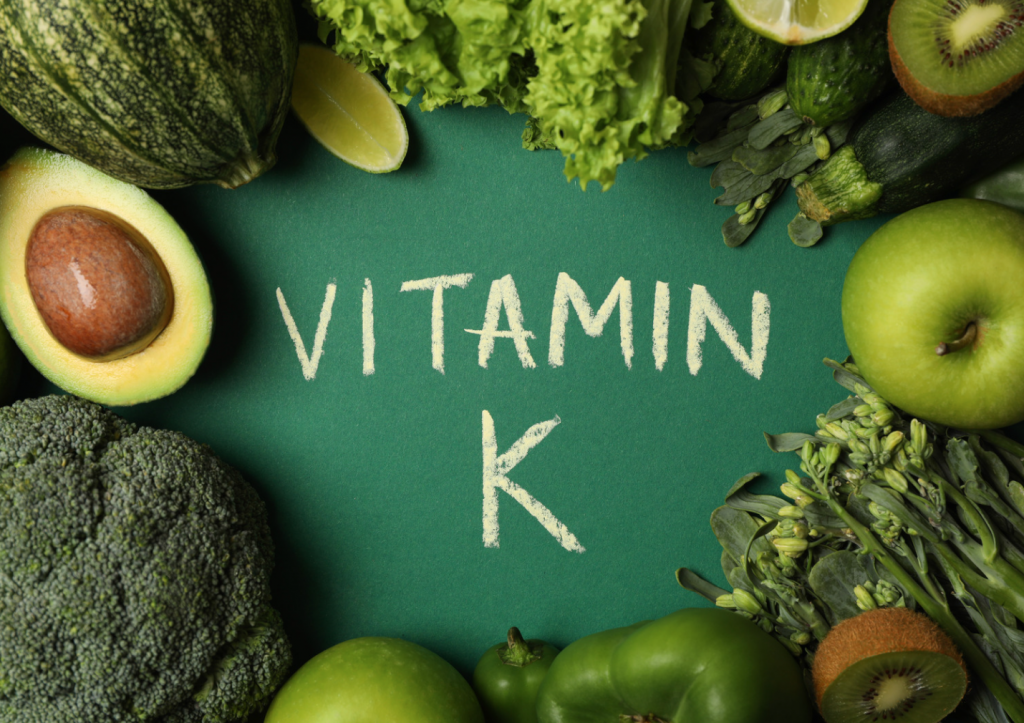To achieve a perfect balance between the different vital functions certain substances called vitamins are necessary. Here, we’ll tell you more about vitamin K. There are two main forms of this vitamin (vitamin K1 and vitamin K2), each found in a different source and with also different biological functions.
Vitamin K1 is Phylloquinone. It plays an important role in blood coagulation because it is an essential cofactor in the activation of certain key proteins. Phytonadione is the synthetic form of vitamin K1. Vitamin K2, also called Menaquinone, is distributed in different forms from MK-4 (menatetrenone) to MK-13.
Dr. Celia Gonzalo Gleyzes – Neolife Medical Team
The Sources, Metabolism, and Recommended Daily Intake of Vitamin K
Vitamin K1 is commonly found in the human diet because it’s synthesized by specific green plants and vegetables. Among these we have kale, spinach, broccoli, and some fruits and herbs. Some oils, like soybean and canola oil, contain large quantities.
The sources of vitamin K2 are: some types of cheese, eggs, meat, and natto (food made with fermented soybeans that is very common in Japan, which gets first place with a content of 775 mcg/100 g). Some menaquinones are synthesized by the gut microbiota.

Vitamin K1 can be converted into vitamin K2 (MK4), and this in turn can be accumulated in extrahepatic tissues. The most common forms of vitamin K2 have 60% of vitamin K1 activity.
The bioavailability of all forms of vitamin K varies greatly depending on the intraluminal nutrient content (in the digestive tract).
In order to properly absorb vitamin K, it’s necessary to have healthy, functioning pancreas and liver, as well as mechanisms of fat absorption. The vitamin K obtained from food sources is linked to proteins; it is released from them with the help of pancreatic enzymes in the small intestine. It then undergoes a solubilization in micelles through the action of bile salts, so that it can be absorbed by the intestinal cells.
A 90 mcg intake is recommended in women, 120 mcg in men, and in children, the amount ranges from 2 to 75 mcg daily.
The different functions of vitamin K
- Coagulation: Vitamin K is essential for the activity of various carboxylase enzymes, which is why it’s necessary for the activation of coagulation factors VII, IX, X, and prothrombin.
- Activation of C and S proteins: these anticoagulant proteins also require vitamin K.
-
Reverse anticoagulation: it may decrease or reverse the anticoagulant effect of dicoumarol (Acenocumarol).
- Bone metabolism: vitamin K is a cofactor of some proteins involved in mineralization, including osteocalcin and the matrix Gla protein (MGP). Vitamin K is responsible for the carboxylation of osteocalcin. This promotes the transition from osteoblast (immature bone cell) to osteocyte (mature bone cell) and also limits osteoclastogenesis (osteoclasts are cells that reabsorb and reshape bones). One study established a positive association between osteoporotic fractures in men and long-term treatment with vitamin K antagonists (anticoagulants). In women of all ages, a low vitamin K intake is associated with bone deterioration which suggests a beneficial effect of vitamin K on bone health. More studies (larger sample sizes, including Caucasian populations, distinguishing between doses and vitamin K types, etc.) are required to recommend vitamin supplements, taking into account possible synergies between different nutrients.
- Coronary calcification: the hypothesis is that vitamin K deficiency may increase it due to poor MGP activity. More studies are needed to confirm this theory.
Conditions at risk of vitamin K deficiency
Because it is a fat-soluble vitamin, the following conditions suggest a greater vigilance or even direct treatment: cystic fibrosis, primary biliary cholangitis, primary sclerosing cholangitis, biliary atresia, familial intrahepatic cholestasis, celiac disease, short bowel syndrome, liver failure, high doses of vitamin E, antibiotics, and toxic doses of vitamin A.
The elderly population, who suffer from obesity or diabetes are also at risk (due to a lower peripheral conversion rate from VK1 to VK2 or/and due to reduced microbiota activity) (1,2).
BIBLIOGRAPHY
(1) UpToDate: Overview of vitamin K
(2) Vitamin K and osteoporosis: Myth or reality? Palermo, Andrea et al. Metabolism – Clinical and Experimental, Volume 70, 57 – 71. https://www.metabolismjournal.com/article/S0026-0495(17)30045-8/fulltext

